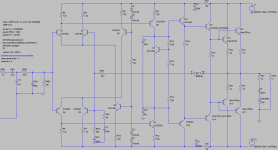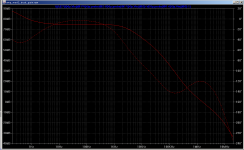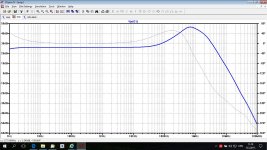took me to post1501 by de Ocampo
My link and AKNs is correct, page starts at post #861 😉
...just scroll down AndrewT.
your link took me to post1501, just as I said in my post. (..............diyaudio.com/forums/software-tools/101810-spice-simulation-87.html)
AKN's link takes me to Andy C post861, again as I posted.(............diyaudio.com/forums/software-tools/101810-spice-simulation-87.html#post1794067)
AKN's link takes me to Andy C post861, again as I posted.(............diyaudio.com/forums/software-tools/101810-spice-simulation-87.html#post1794067)
Last edited:
Hi,
I linked to a specific post. De Ocampo linked to a thread page. Depending on your preference settings (post per page) links to a page may end up in different places.
I linked to a specific post. De Ocampo linked to a thread page. Depending on your preference settings (post per page) links to a page may end up in different places.
To summarize posts 28 and 29: it looks like dual-gain can't be used with TMC. Thanks Dave Zan for helping me to see this. TMC pushes loop-gain phase close to -180 over a few octaves starting in the upper audio band, and dual-gain pushes it out yet another 45 to 60 degrees in the same region. Put these together and you're deep into "conditional stability." Somehow it simulates without trouble. The real world is messier than sim, let's not trust this in the real world.
What can dual-gain feedback do? I believe it can work in amps that otherwise would have a near-constant -90 degree loop gain characteristic, like the lag-compensated Rotel from post 8 or any conventional Miller-compensated amp.
The Rotel design I have built is attached, along with its loop gain return ratio plot and distortion spectrum. It makes < -120dB distortion (simulated) into 2 ohms! Not bad eh?
Please let me know if the return ratio plot scares you.
ps. I don't intend to advocate for a design without output inductors. I'd rather have them -- there's just not room on the PCB to kludge them in.
pps. Maybe the relevant question is whether dual-gain feedback makes for a better modded Rotel than, say, TPC? If these are so mathematically similar, maybe TPC can do just as well...
What can dual-gain feedback do? I believe it can work in amps that otherwise would have a near-constant -90 degree loop gain characteristic, like the lag-compensated Rotel from post 8 or any conventional Miller-compensated amp.
The Rotel design I have built is attached, along with its loop gain return ratio plot and distortion spectrum. It makes < -120dB distortion (simulated) into 2 ohms! Not bad eh?
Please let me know if the return ratio plot scares you.
ps. I don't intend to advocate for a design without output inductors. I'd rather have them -- there's just not room on the PCB to kludge them in.
pps. Maybe the relevant question is whether dual-gain feedback makes for a better modded Rotel than, say, TPC? If these are so mathematically similar, maybe TPC can do just as well...
Attachments
...Maybe the relevant question is whether dual-gain feedback makes for a better modded Rotel than, say, TPC? If these are so mathematically similar, maybe TPC can do just as well...
Reasonable question, I did think about this when I first started to study feedback theory.
I concluded the "dual gain" approach is less than optimal and that TPC does not do "just as well" but better.
Sketch or simulate the open loop and closed loop plots of the two techniques and compare them.
There is also the issue of EMI resistance.
Do you really want lots of gain at ultra sonic/RF?
This seems likely to be problematic, at the least.
Best wishes
David
what is "Dual Gain"..
It is jpc2001's term for a lift in the demanded gain, explained in post #2.
This can actually work to stabilize an amplifier but is "sub-optimal".
So it's not usually done, and thus there isn't a common term for the practice.
It's R28 & C12 in post #45
Best wishes
David
Last edited:
Would this increased gain make the amplifier less tolerant of RF interference?
Eg coming in via the speaker cables, or via the mains cable?
Eg coming in via the speaker cables, or via the mains cable?
...make the amplifier less tolerant of RF interference?
As you would expect, it certainly won't help.
Best wishes
David
I don't see that RF ingress from speaker cables should be a problem: high gain means the RF voltage at the feedback node is a smaller-than-usual fraction of the voltage at the speaker cable.
RF ingress from the input is a concern. I'm using an extra R-C low pass filter at the input to mitigate this.
RF ingress from the input is a concern. I'm using an extra R-C low pass filter at the input to mitigate this.
- Status
- Not open for further replies.
- Home
- Amplifiers
- Solid State
- Improving the badger/blameless for ultra low distortion



